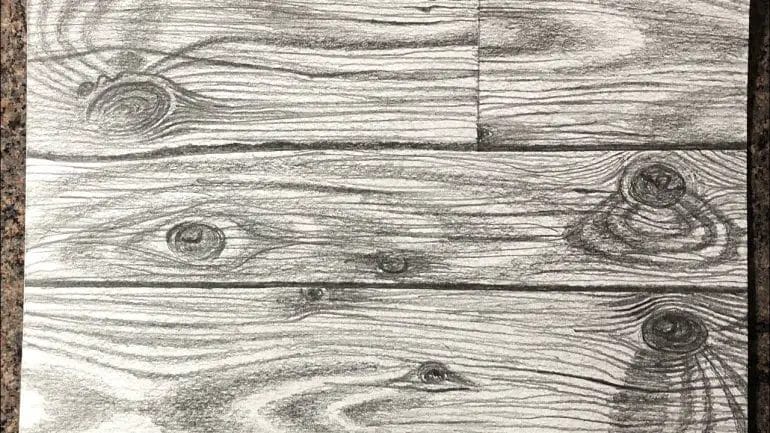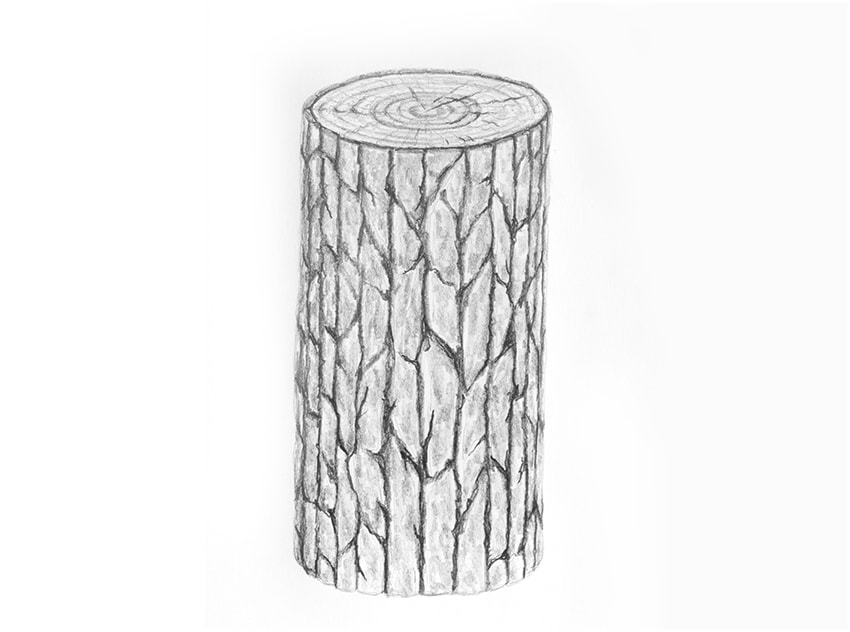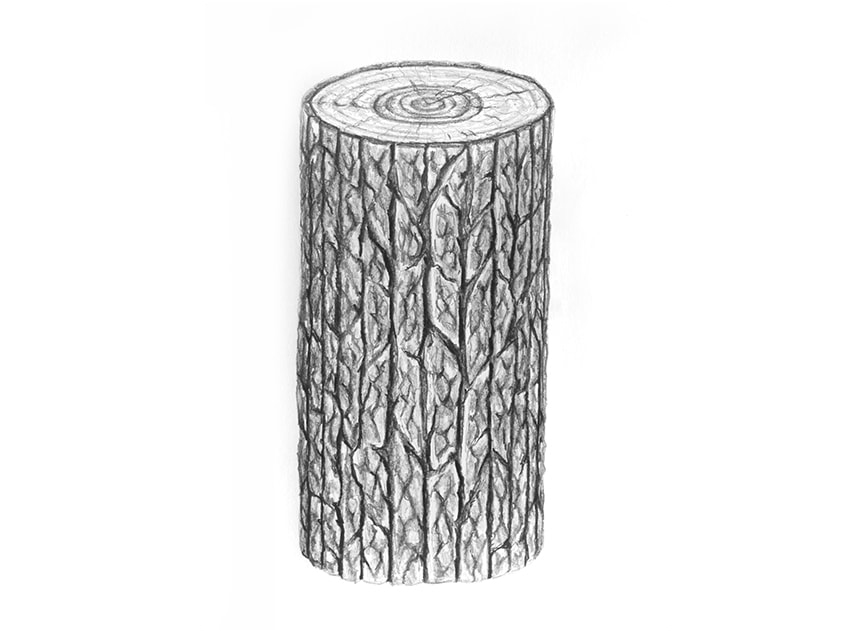Learning how to draw a wood can be an exciting and immersive artistic experience. Capturing the intricate details of trees, foliage, and natural textures requires careful observation and a creative touch. Whether you’re a beginner or an experienced artist, this guide will provide you with step-by-step instructions and helpful tips on how to create a realistic and visually appealing wood drawing.
From sketching basic outlines to adding shading and highlights, each stage of the drawing process is crucial in bringing your wood artwork to life. By mastering techniques like cross-hatching, stippling, and blending, you can create depth, texture, and dimension in your wood drawing. With practice and patience, you’ll soon be able to create stunning wood drawings that showcase the beauty and complexity of nature.

Experimenting with different pencils, charcoal, or even digital tools can give your wood drawing a unique style and atmosphere. Don’t be afraid to explore various techniques and materials to find your own artistic voice. Remember, the key to a successful wood drawing is capturing the organic shapes, patterns, and tones that make each tree unique. So grab your drawing supplies and let your imagination take root as you embark on this artistic journey of creating a wood drawing.

Different Types of Wood and How to Depict Them
Wood is a versatile and widely used material in various industries, including construction, furniture making, and crafting. With its natural beauty, durability, and abundance, wood has become a popular choice for many applications. There are several different types of wood, each with its unique characteristics and appearance. In this section, we will explore some of the most common types of wood and discuss ways to depict their features.
1. Oak
Oak is a hardwood known for its strength and durability. It has a prominent grain pattern with light-colored sapwood and darker heartwood. Oak is often used in furniture making and cabinetry due to its attractive appearance and resistance to wear and tear. To depict oak in your projects, emphasize its grain pattern by using long, wavy lines or small dashes. Add depth by shading the heartwood areas slightly darker than the sapwood.
2. Pine
Pine is a softwood that is widely available and relatively inexpensive. It has a pale yellowish color with a straight grain. Pine is commonly used in construction and woodworking projects. To depict pine, use short and straight lines to represent its grain pattern. Add some knots or resin pockets to capture its natural imperfections.
3. Mahogany
Mahogany is a hardwood known for its rich reddish-brown color and beautiful grain patterns. It is often used in high-end furniture and musical instruments. To depict mahogany, use long and flowing lines to represent its grain. Add warm, reddish-brown tones to highlight its color. Pay attention to the variations in the grain pattern to make it look more realistic.
4. Maple
Maple is a light-colored hardwood with a close grain pattern. It is commonly used in flooring, cabinetry, and musical instruments. To depict maple, use short and fine lines to represent its grain. Keep the lines close together to create a smooth appearance. Use light shades to capture its pale color and avoid too much contrast.
5. Walnut
Walnut is a dark-colored hardwood with a straight grain and occasional swirls. It is highly valued for its rich color and natural beauty. Walnut is often used in high-end furniture and decorative items. To depict walnut, use long, straight lines to represent its grain, with occasional curves to show the swirls. Use deep shades of brown to capture its dark color.
6. Cedar
Cedar is a softwood known for its aromatic scent and natural resistance to insects and decay. It has a reddish-brown color with a straight grain. Cedar is commonly used in outdoor furniture, siding, and decking. To depict cedar, use short, straight lines to represent its grain pattern. Add some knots and variation in color to make it more realistic.
7. Birch
Birch is a light-colored hardwood with a distinctive white bark. It has a fine and even grain pattern. Birch is commonly used in furniture making and plywood production. To depict birch, use short and thin lines to represent its grain. Add some variation in color to mimic its natural appearance. Pay attention to the smoothness and evenness of the lines to capture its fine grain.
In summary, there are various types of wood, each with its unique characteristics and appearance. To depict these different types of wood in your projects, it is essential to pay attention to their grain patterns, colors, and overall aesthetics. By using the right techniques and emphasizing the distinctive features of each wood type, you can create realistic and visually appealing representations of wood.

Adding Texture and Details to your Wood Drawing
Creating a realistic wood texture and adding intricate details to your wood drawing can bring your artwork to life. Whether you are an experienced artist or just starting out, there are several techniques you can use to achieve a textured and detailed wood effect. In this section, we will explore some of these techniques and provide step-by-step instructions to help you enhance your wood drawing.
1. Choosing the Right Pencil
The first step in adding texture and details to your wood drawing is to choose the right pencil. Different pencils have varying levels of hardness and darkness, which can greatly affect the outcome of your artwork. For a wood texture, it is recommended to use a combination of soft and hard graphite pencils. A soft pencil, such as a 2B or 4B, can be used to create darker and softer shading, while a harder pencil, like an H or 2H, is ideal for adding fine details and lighter shading.
2. Layering and Blending
Layering and blending are essential techniques in creating texture and depth in your wood drawing. Start by lightly shading the entire wood surface with your chosen soft pencil, using even strokes to mimic the direction of the wood grain. Then, gradually build up layers of shading to create darker areas and shadows. To blend the shading and achieve a smoother texture, use a blending stump or a piece of tissue to gently smudge and soften the graphite.
3. Emphasizing the Wood Grain
The wood grain is a distinctive feature of any wood surface. To emphasize the wood grain in your drawing, use a harder pencil to carefully draw thin lines or curves in the direction of the grain. Pay attention to the variations in thickness and spacing of the lines to create a realistic effect. You can also use an eraser to lighten certain areas of the wood grain, creating highlights and adding dimension to your drawing.
4. Adding Knots and Imperfections
No piece of wood is perfect, and adding knots and imperfections to your wood drawing can make it look more authentic. Use a sharp pencil or a fine-tipped pen to draw small, irregular shapes on the surface of the wood, representing knots or cracks. You can also use a kneaded eraser to lift off some graphite or lighten areas around the knots to make them stand out.
5. Enhancing with Colored Pencils
If you want to add an extra touch of realism to your wood drawing, you can enhance it with colored pencils. Choose a set of colored pencils that closely match the hues and tones of wood, such as browns, ochres, and tans. Use these pencils to layer additional colors on top of your graphite shading, focusing on areas where the wood may have different tones or textures. Blend the colored pencil with a blending stump or a cotton swab to achieve a smooth transition between the graphite and colored layers.
6. Fine Details and Highlights
To bring your wood drawing to its full potential, pay attention to the finer details and highlights. Use a sharp pencil or a fine-tipped pen to add fine lines, cracks, or wood grain patterns. You can also use a white gel pen or a white colored pencil to create highlights on the edges or raised surfaces of the wood. These subtle details can make a significant difference in the overall realism of your artwork.
In summary, adding texture and details to your wood drawing requires careful observation and the use of various techniques. Choosing the right pencil, layering and blending, emphasizing the wood grain, adding knots and imperfections, enhancing with colored pencils, and focusing on fine details and highlights are some of the key steps in achieving a realistic wood effect. By practicing these techniques and experimenting with different tools, you can enhance your wood drawings and create stunning artworks that capture the beauty of wood.

4. Incorporating Shadows and Highlights for Realistic Wood Rendering
Creating realistic wood rendering is a key skill for digital artists and designers. One important aspect of achieving this realism is incorporating shadows and highlights into the wood texture. Shadows and highlights add depth, dimension, and realism to the wood surface, making it appear more natural and lifelike.
When rendering wood, it is essential to understand how light interacts with the surface. Light sources create shadows and highlights on the wood, which can vary depending on the direction, intensity, and color of the light. By accurately replicating these lighting effects, you can enhance the realism of your wood textures.
4.1 Understanding Light and Shadow
Before you can effectively incorporate shadows and highlights into your wood rendering, it is crucial to understand how light behaves when it interacts with different surfaces. When light hits an object, it either reflects, absorbs, or transmits through the material. In the case of wood, light is partially absorbed and partially reflected.
The areas where light is absorbed appear darker, creating shadows, while the areas where light is reflected appear brighter, forming highlights. Understanding this interplay between light, absorption, and reflection is essential for creating realistic wood textures.
4.2 Creating Shadow Effects
To create realistic shadows in your wood rendering, you need to consider the position and intensity of the light source. Shadows are typically formed on the side of the wood that is not directly exposed to the light source. The intensity of the shadow can vary depending on the distance between the light source and the wood surface.
To incorporate shadows into your wood texture, you can use various techniques, such as adding gradient overlays or utilizing layer blending modes in your software. By carefully adjusting the opacity and blending modes of the shadow layers, you can achieve a more natural and realistic shadow effect.
4.3 Adding Highlights
In addition to shadows, highlights play a crucial role in creating realistic wood rendering. Highlights are the areas of the wood that receive direct light, appearing brighter and more reflective. To incorporate highlights, you need to identify the parts of the wood that would catch the most light.
One effective technique for adding highlights to your wood texture is to utilize a combination of gradients and layer blending modes. By applying a gradient overlay that mimics the direction and intensity of the light source, you can create realistic highlights that enhance the three-dimensional appearance of the wood.
4.4 Balancing Shadows and Highlights
When incorporating shadows and highlights into your wood rendering, it is essential to find the right balance between the two. Too much shadow can make the wood texture appear flat and dull, while excessive highlights can make it look unrealistic and artificial.
Experimentation and observation are key to achieving the perfect balance. Study reference images of real wood or observe how light interacts with wood in the real world. Pay attention to the subtle variations in shadows and highlights, and try to replicate them in your digital rendering.
4.5 Conclusion
Incorporating shadows and highlights is a crucial step in creating realistic wood rendering. By understanding how light interacts with the wood surface and skillfully replicating the interplay between shadows and highlights, you can enhance the depth and realism of your digital wood textures. Experiment, observe, and refine your techniques to achieve the perfect balance and create stunningly realistic wood renderings.
Tips and Tricks for Achieving a 3D Effect in Wood Drawings
Wood drawings can be a stunning artistic expression that adds depth and dimension to your work. One way to take your wood drawings to the next level is by creating a 3D effect. This technique brings your artwork to life, making it visually appealing and captivating. In this section, we will discuss some tips and tricks to help you achieve a 3D effect in your wood drawings.
1. Layering Technique
A crucial aspect of creating a 3D effect in wood drawings is using the layering technique. By layering different elements of your drawing, you can create depth and dimension. Start by sketching the basic outline of your drawing, and then add layers of details, textures, and shading. Use darker shades for areas that should appear closer to the viewer and lighter shades for areas that should recede. This technique will give your wood drawings a realistic and three-dimensional look.
2. Perspective Drawing
Understanding perspective is essential for achieving a convincing 3D effect in wood drawings. Perspective drawing involves creating the illusion of depth and distance on a two-dimensional surface. Use techniques such as foreshortening, vanishing points, and horizon lines to create a sense of depth in your artwork. Pay attention to the size and spacing of objects, as well as their placement within the composition. Mastering perspective will enhance the realism and depth of your wood drawings.
3. Light and Shadow
Light and shadow play a crucial role in creating a 3D effect in any form of artwork, including wood drawings. Understanding how light interacts with objects and creating realistic shadows can bring your drawings to life. Observe the direction of light sources in your reference or imagination, and shade accordingly. Use crosshatching, stippling, or other shading techniques to create the illusion of depth and volume. By mastering light and shadow, you can make your wood drawings appear three-dimensional and visually captivating.
4. Texture and Detail
Adding texture and detail to your wood drawings can significantly enhance the 3D effect. Pay attention to the surface texture of different elements in your drawing and replicate it using various shading techniques. By adding finer details, such as wood grain, knots, or intricate patterns, you can create a realistic and tactile feel. Texture and detail not only add depth to your wood drawings but also make them visually engaging and captivating to the viewer.
5. Experiment with Different Tools and Techniques
Don’t be afraid to experiment with different tools and techniques to achieve the desired 3D effect in your wood drawings. Explore different types of pencils, charcoal, or even wood burning techniques to create varying shades and textures. Use blending tools, such as tortillions or blending stumps, to create smooth transitions between different areas. By experimenting with different tools and techniques, you can discover unique ways to add depth and dimension to your wood drawings.
In summary, achieving a 3D effect in wood drawings requires a combination of techniques such as layering, perspective drawing, mastering light and shadow, adding texture and detail, and experimenting with different tools and techniques. By incorporating these tips and tricks into your artwork, you can create captivating wood drawings that truly stand out.
FAQs
1. How can I draw realistic wood textures?
To draw realistic wood textures, start by sketching the basic shape of the wood. Then, add wood grain lines that follow the shape of the wood. Vary the thickness and direction of the lines to create a natural look. Finally, add shading and highlights to give it depth and dimension.
2. What techniques can I use to create a wood texture?
There are several techniques you can use to create a wood texture, such as stippling, cross-hatching, or using a wood grain stamp or stencil. Experiment with different tools and methods to achieve the desired effect. Remember to observe real wood textures for reference.
3. Which colors should I use to draw wood?
When drawing wood, use a combination of warm, earthy colors such as browns, tans, and grays. Start with a base color and then layer darker and lighter shades to create depth and texture. Remember to blend the colors together for a more realistic look.
Conclusion
In conclusion, learning how to draw a wood can be a rewarding and engaging experience. By following the steps mentioned above, you can easily bring a piece of nature to life on paper. Whether you are a beginner or an experienced artist, practicing the techniques of shading, texture, and dimension will help you create realistic and visually appealing wood drawings.
Remember to pay attention to the details such as the grain patterns and knots to add authenticity to your artwork. Experiment with different tools and materials to achieve unique effects. Don’t be afraid to make mistakes, as they can often lead to unexpected discoveries and improvements in your technique. So grab your pencils, observe the beauty of wood, and let your creativity flow!